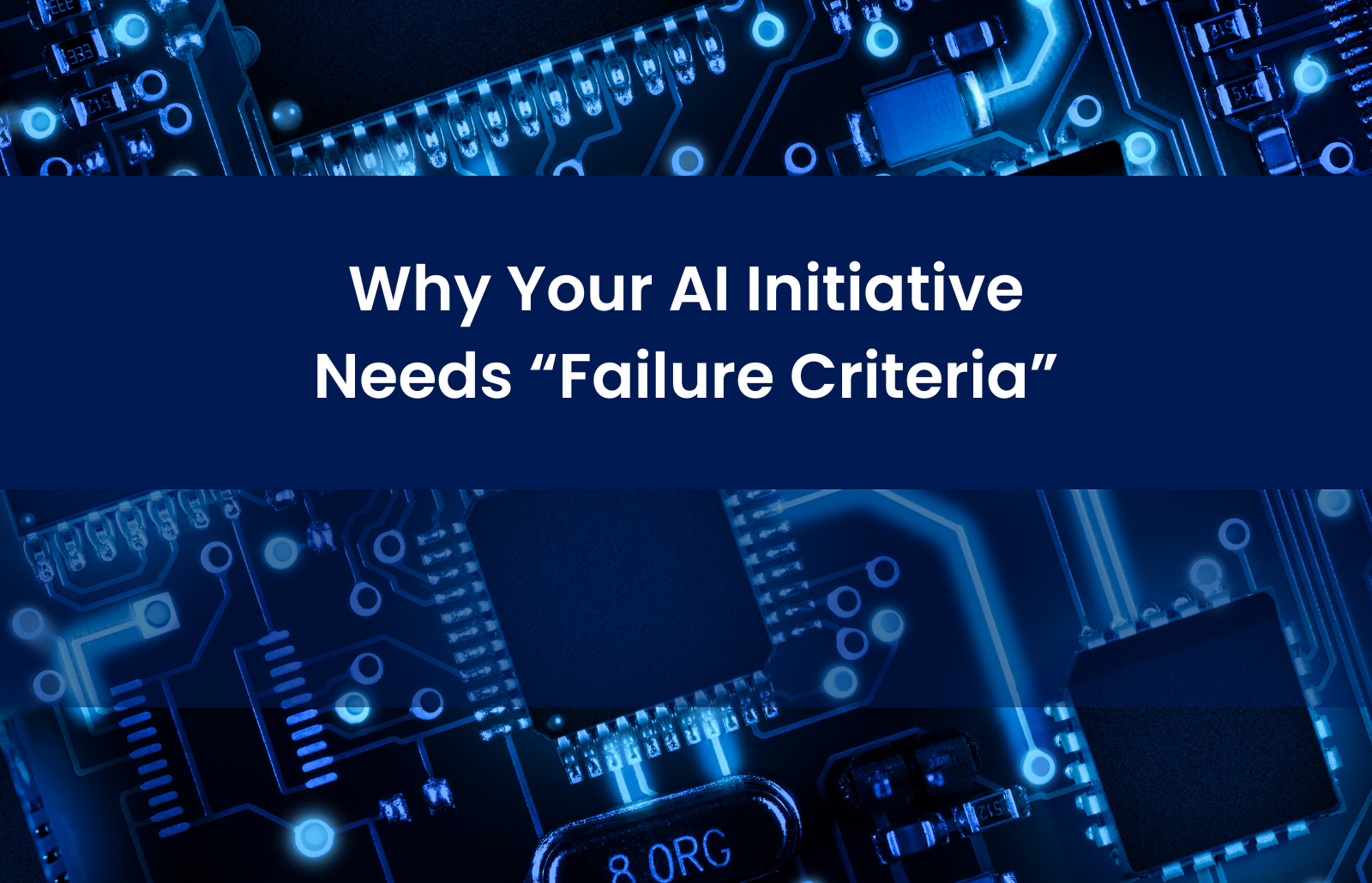In our latest State of AI Adoption 2025 Survey, 47% of technology leaders told us they wish they had more time for “strategic thinking.” The irony is clear: many are too busy running AI pilots to stop and ask whether those initiatives should exist at all.
This paradox surfaced repeatedly during the Zartis AI Summit, where leaders from across industries reflected on a pattern of ambition turning into distraction. The technology may be advanced, but the governance behind it often isn’t. The problem isn’t innovation itself—it’s the absence of discipline. Too many organizations are chasing proofs of concept without ever defining what success or failure looks like.
At Zartis, we argue that defining failure criteria is not a pessimistic exercise; it’s a strategic one. It’s how organizations protect focus, capital, and credibility in an environment that rewards motion more than meaning.
The Seduction of Cool Demos
The ease of building AI tools has created a false sense of progress across industries. It’s never been easier to generate something impressive on screen—yet much of what dazzles in demos rarely survives contact with the real world.
This “demo effect” has become a leadership trap. Under pressure to appear innovative, executives rush experimental tools into production before validating their long-term value. The result is a growing collection of AI projects that look impressive but deliver little measurable impact.
The challenge isn’t that leaders are over-ambitious; it’s that they’re overconfident in early success. Without a plan for what happens when the novelty fades, even well-intentioned pilots risk becoming silent drains on time, morale, and budgets.
Redefining Success: Start with When to Stop
In software development, teams define success criteria before a line of code is written. In AI, this discipline often disappears—replaced by vague optimism and the assumption that learning alone equals progress.
Leaders who take a strategic view approach it differently. They define not just what success looks like, but what failure will look like too. Whether it’s a specific accuracy threshold, an adoption rate, or a financial return by a defined point, they decide in advance when a project no longer justifies continued investment.
This clarity transforms experimentation into strategy. It turns the act of stopping into a deliberate decision, rather than an emotional reaction to fatigue or budget pressure.
The Hidden Cost of Endless Pilots
The industry’s biggest AI expense isn’t compute power—it’s diffusion of effort. Each new prototype demands leadership oversight, data infrastructure, and developer time. When pilots multiply without coordination, the opportunity cost quickly outweighs the learning benefit.
Defining failure criteria early prevents this silent erosion of focus. It ensures that innovation pipelines are guided by intent, not inertia. Instead of running dozens of uncoordinated pilots, leading organizations set clear “exit points” into every AI initiative. Projects that fail to meet the defined outcomes are retired systematically, freeing resources for the few that prove real potential.
This shift from proliferation to prioritization distinguishes mature AI organizations from those still experimenting without direction.
When Data Maturity Meets Leadership Maturity
Discussions about AI maturity usually focus on data quality or model accuracy. Yet the more decisive factor is often leadership maturity—the ability to recognize when an initiative has reached the limits of its value.
At the AI Summit, several leaders shared moments when their teams made the difficult call to discontinue functioning systems that weren’t driving meaningful business improvement. These were not stories of failure, but of discernment. By ending projects that merely worked, rather than transformed, they freed resources to pursue higher-impact opportunities.
True leadership maturity lies in understanding that “working” and “worthwhile” are not the same thing. Ending a project is not a retreat; it’s an act of strategic focus.
Designing a Culture that Tolerates Failure—Intelligently
An AI-driven organization can’t thrive on experimentation alone; it must learn how to fail constructively. That requires an environment where ending a project is seen as responsible governance, not defeat.
The most effective teams use regular review cycles to assess whether pilots still align with business objectives. They measure performance, cost, and user adoption—and then decide whether to scale, pause, or stop. This rhythm prevents initiatives from drifting indefinitely and ensures that every project remains accountable to measurable outcomes.
Organizations that normalize this process build resilience. They replace emotional attachment with evidence-based decision-making and shift from a culture of endless creation to one of deliberate curation.
The Strategic Art of Knowing When to Quit
In AI leadership, restraint is as critical as ambition. Defining when to stop is an act of clarity, not caution. It ensures that innovation remains tethered to value and that teams can redirect energy toward initiatives with real potential.
The most successful AI organizations set expiration dates on every pilot. If a project earns renewal through clear results, it continues. If not, it ends with purpose and documentation, feeding lessons into the next iteration.
The future of AI leadership will belong to those who can balance exploration with precision—leaders who know that progress isn’t measured by how much they start, but by how wisely they stop.
Zartis Insight: Turning Focus into Strategy
In a landscape of limitless possibilities, focus is the rarest form of innovation.
At Zartis, we help organizations design AI strategies that are disciplined, measurable, and aligned to business goals. That includes knowing when to optimize—and when to end the experiment. Because in AI, as in leadership, sustainable progress begins with the courage to define failure.

